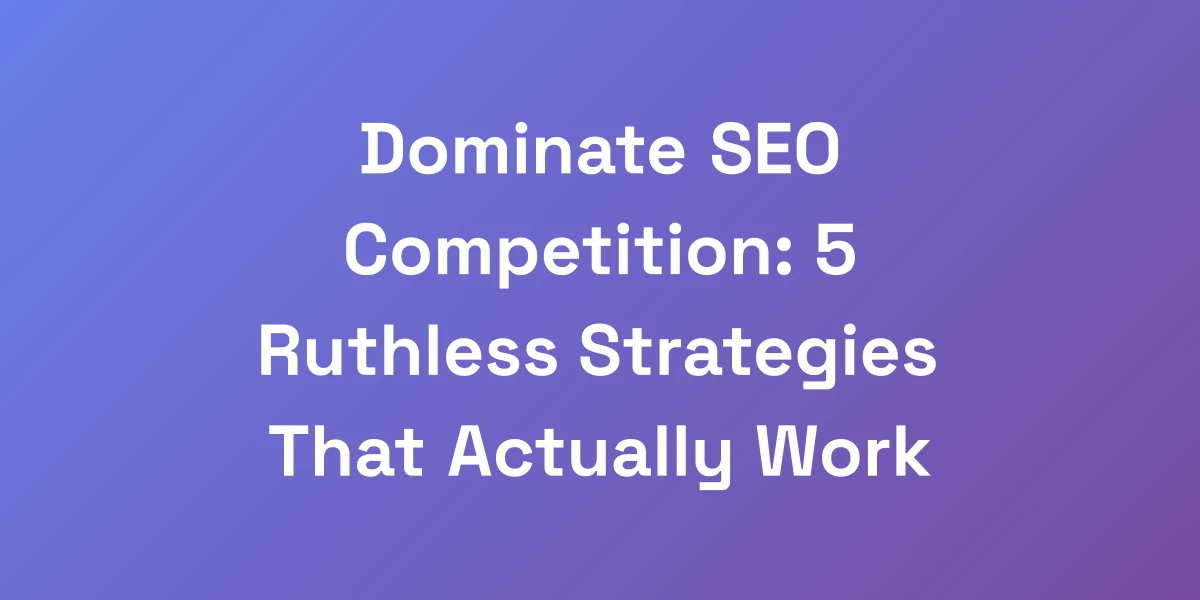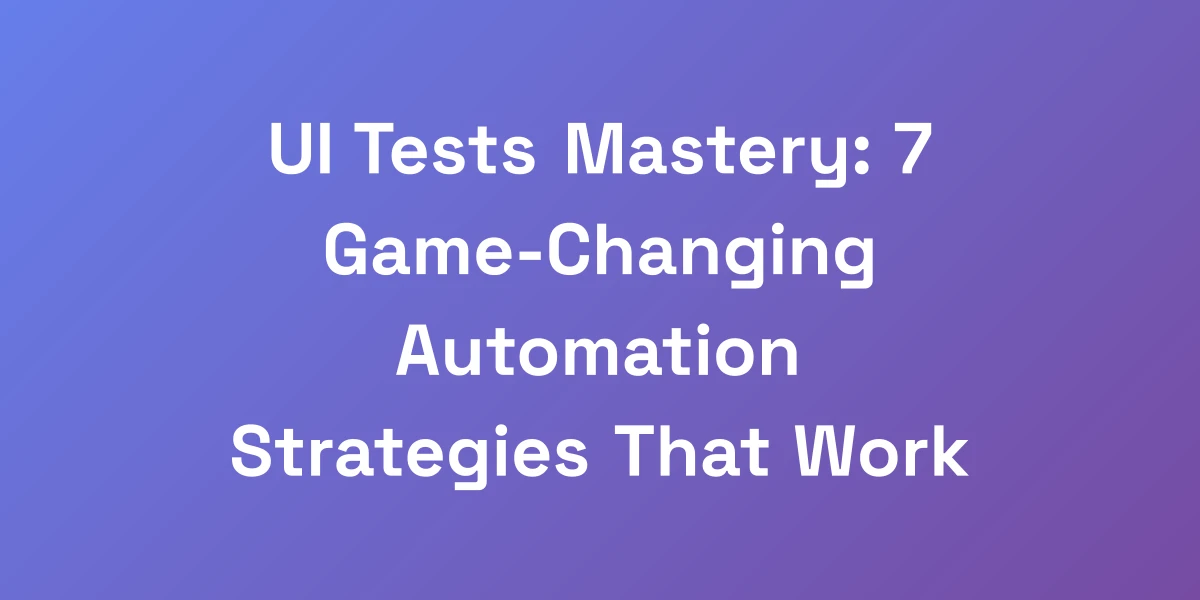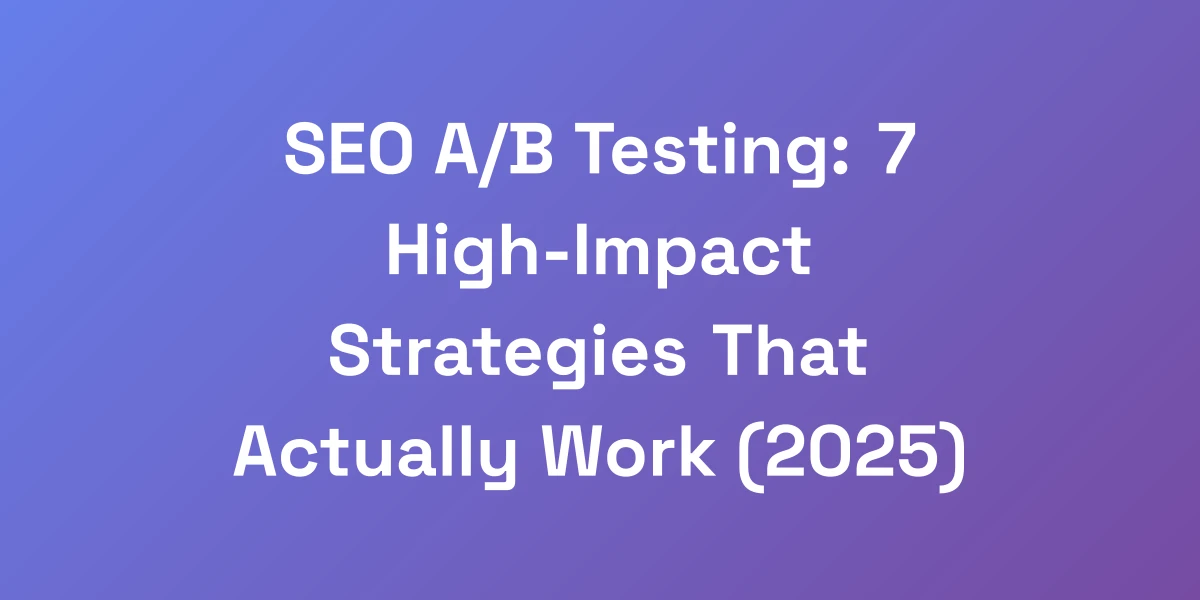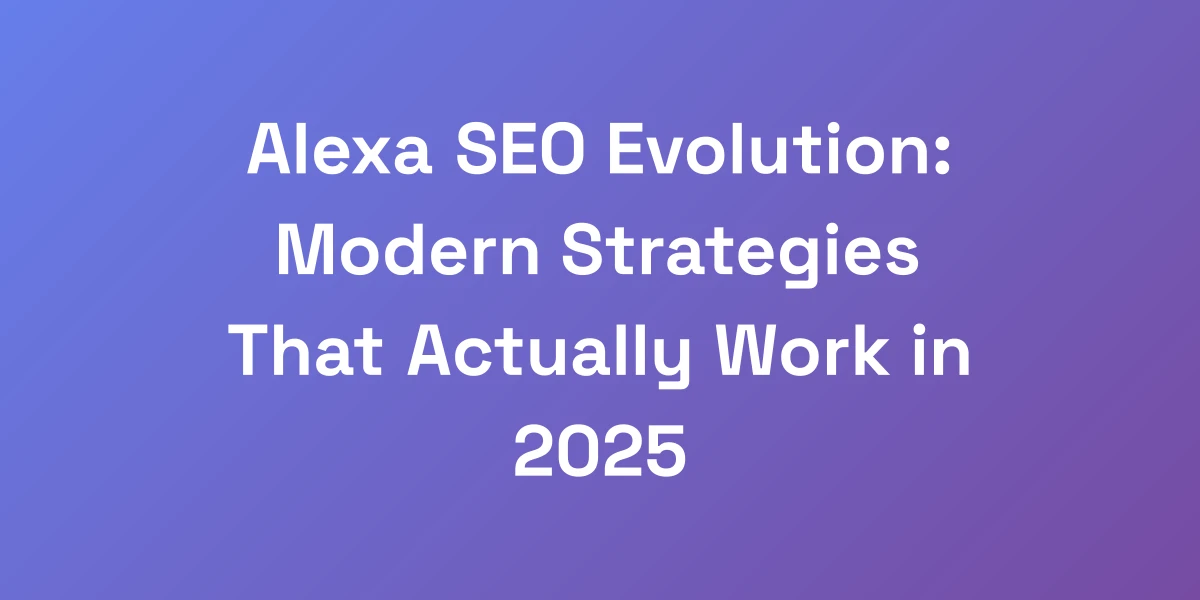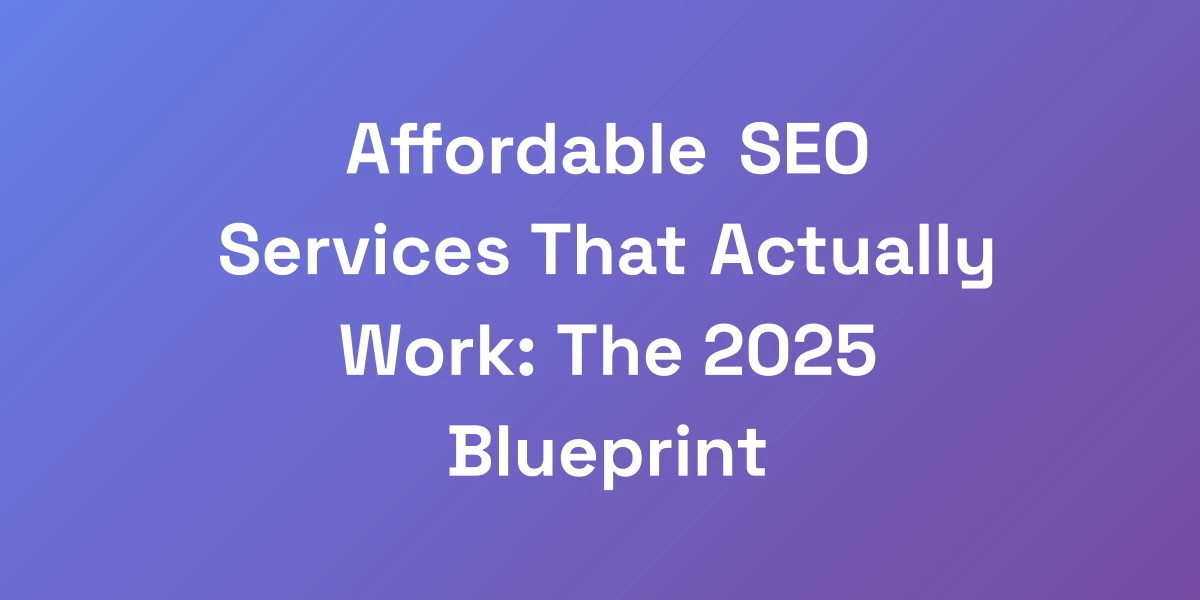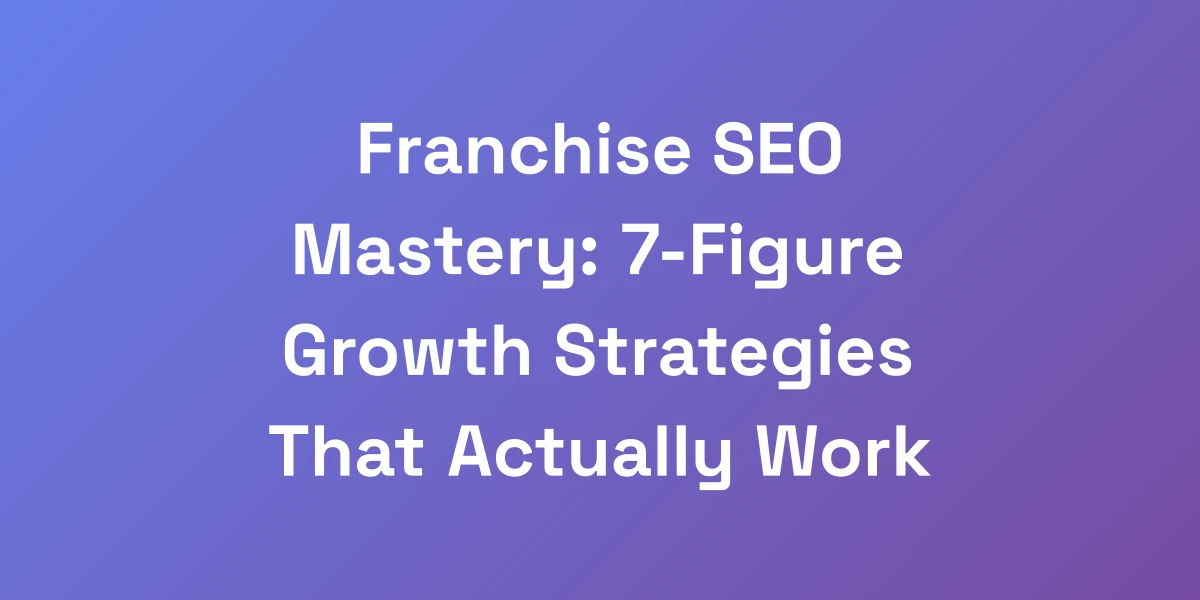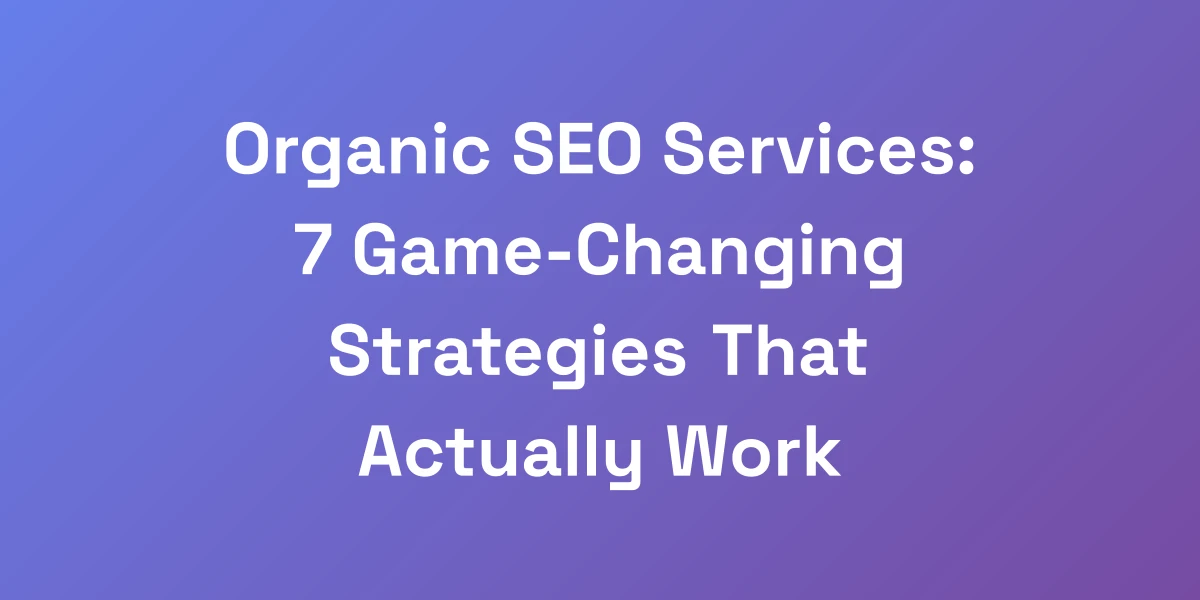
Organic SEO Services: 7 Game-Changing Strategies That Actually Work
Feb 25, 2025 | By [email protected]
Let’s get straight to it. When it comes to organic SEO services, most businesses are stuck in the past, bleeding money without seeing any real results.
We’ve seen it time and again: companies pouring six figures into ineffective SEO tactics that simply don’t move the needle. Why? Because they’re relying on strategies that worked back in 2015.
In today’s hyper-competitive landscape, you need a completely different approach. Forget the outdated methods. We’re about to reveal the game-changing strategies that are driving success for top-tier businesses in 2025.
Are you ready to transform your SEO game and finally see the results you deserve? Keep reading—these strategies could be the difference between failing and thriving in your market.
Why Most Businesses Fail at Organic SEO (And How to Avoid Their $100K+ Mistakes)
Let me be direct: 90% of businesses are hemorrhaging money on ineffective SEO services. We’ve watched countless companies burn through six-figure budgets without moving the needle. Here’s the brutal truth – most organic SEO services are selling you outdated strategies that worked in 2015.
But in today’s hyper-competitive landscape, you need a completely different approach. We’re going to show you exactly what works now, based on scaling multiple 8-figure businesses through organic search.
The Hidden Cost of Cheap SEO Services
Opting for cheap SEO services might seem like a smart move to save costs, but it can actually set you back much more in the long run.
Cheap SEO often means poor quality work, resulting in low search rankings and wasted resources.
- Low-Quality Content: Cheap services prioritize quantity over quality, flooding your site with subpar content that doesn’t engage or convert.
- Spammy Backlinks: These services may use black-hat techniques to build links, risking penalties from search engines.
- Lack of Customization: One-size-fits-all strategies ignore your unique business needs, leading to ineffective results.
Investing in quality SEO ensures sustainable growth and protects your reputation online.
Why Traditional SEO Agencies Are Becoming Obsolete
The SEO landscape is evolving, and traditional agencies are struggling to keep up. Here’s why:
- Algorithm Changes: Search engines are constantly updating their algorithms, and outdated strategies no longer work.
- Lack of Transparency: Traditional agencies often keep clients in the dark about their methods and results.
- Slow Adaptation: Agencies that can’t pivot quickly to new SEO trends are left behind.
We prioritize staying ahead of the curve by continuously adapting our strategies to align with the latest SEO trends and Google ranking factors and algorithm updates.
The New ROI-Focused Approach to Organic Search
SEO is not just about rankings; it’s about driving revenue. Here’s our ROI-focused approach:
- Revenue-Driven Metrics: We track metrics that directly impact your bottom line, not just vanity stats.
- Custom Strategies: Tailored SEO strategies that align with your business goals and revenue targets.
- Continuous Optimization: We constantly refine our strategies based on performance data to maximize ROI.
This approach ensures that every SEO effort contributes to your financial growth.
Real Numbers: What Good SEO Actually Costs in 2025
Understanding the true cost of effective SEO is crucial for budgeting. Here’s what you can expect:
- Annual Costs: Most businesses pay between $10,000 and $50,000 annually for comprehensive SEO services.
- Monthly Retainers: Expect to spend between $1,000 and $1,500 per month on quality SEO support.
- Hourly Rates: Expert SEO professionals charge between $100 and $149 per hour, reflecting their expertise and the value they bring.
Investing in premium SEO pricing plans ensures you receive the attention and expertise needed for significant, long-term results.
Red Flags That Scream “Run Away” From an SEO Provider
Not all SEO providers are created equal. Here are the warning signs to avoid:
- Guaranteed Rankings: No one can guarantee first-page rankings. Be wary of promises that sound too good to be true.
- Opaque Methods: If they can’t explain their strategies clearly, they’re likely hiding something.
- No Transparent Reporting: Regular, detailed reports are a must. If they lack transparency, consider walking away.
- High-Pressure Tactics: Pushy sales tactics often indicate a lack of genuine confidence in their services.
Choosing a provider with transparent practices and realistic expectations is key to successful SEO.
The Only 3 Organic SEO Metrics That Actually Matter for Revenue
Stop obsessing over vanity metrics like keyword rankings and backlink counts. After analyzing data from over 300 businesses, we’ve identified the only three SEO metrics that directly correlate with revenue growth.
These aren’t the metrics agencies want you to focus on because they’re harder to manipulate. But they’re the ones that separate seven-figure businesses from those struggling to break even. Let us show you what actually moves the needle.
Beyond Rankings: The True North Star Metrics
Your true north star metrics are the guiding lights that directly influence revenue. These metrics provide a clear picture of your SEO’s effectiveness.
- Organic Traffic: The volume of visitors coming to your site through search engines. More targeted traffic often means more potential customers.
- Conversion Rate: The percentage of visitors who take a desired action, like making a purchase or filling out a form.
- Revenue from Organic Search: The actual income generated from traffic that originated from search engines.
Focusing on these metrics ensures your SEO efforts are directly contributing to your financial goals.
Setting Up Revenue-Focused SEO Tracking
To track revenue-focused SEO metrics effectively, you need a robust tracking system:
- Google Analytics Integration: Connect your SEO efforts with Google Analytics to monitor traffic and conversions.
- Goal Setting: Define what constitutes a conversion for your business and set up goals in your analytics platform.
- E-commerce Tracking: If you run an online store, implement e-commerce tracking to measure sales, average order value, and more.
By meticulously setting up tracking, you can accurately measure the impact of your SEO strategies on revenue.
How to Measure SEO ROI Like a CFO
Measuring SEO ROI requires a systematic approach, much like a CFO would:
- Calculate Total Investment: Include all costs associated with your SEO efforts, from agency fees to internal resources.
- Determine Revenue Attribution: Assign revenue to specific SEO-driven sessions and conversions.
- ROI Formula: Use the formula (Revenue from SEO – Total Investment) / Total Investment * 100 to determine your ROI.
This method provides a clear understanding of the financial return your SEO investments are generating. According to SEO ROI statistics, businesses can see substantial returns when investing correctly.
The Customer Journey Metrics That Predict Success
Understanding how customers interact with your site helps predict SEO success:
- Dwell Time: The amount of time a visitor spends on your site before returning to the search results. Higher dwell time indicates valuable content.
- Bounce Rate: The percentage of visitors who leave after viewing only one page. A lower bounce rate suggests better engagement.
- Pages Per Session: The number of pages a visitor views during a single session. More pages viewed generally means more interest.
Monitoring these metrics helps you understand user behavior and refine your SEO strategies accordingly.
Creating a Data-Driven SEO Dashboard
A data-driven SEO dashboard is essential for tracking your key metrics and making informed decisions:
- Customizable Reports: Tailor your dashboard to display the metrics that matter most to your business.
- Real-Time Data: Ensure your dashboard provides up-to-date information for timely strategic adjustments.
- Visualization Tools: Use graphs and charts to make data interpretation easier and more actionable.
With a well-designed SEO dashboard, you can constantly monitor performance and swiftly adapt to changes, ensuring your SEO efforts are always aligned with your revenue goals.
The 80/20 of Technical SEO That Drives Immediate Results
Here’s what nobody tells you about technical SEO: 80% of the results come from just 20% of the optimizations. We’ve identified the exact technical changes that delivered millions in additional revenue for our clients.
Forget the complex jargon and “nice-to-have” tweaks. These are the mission-critical adjustments that directly impact your bottom line. Most businesses overcomplicate this – let’s focus on what actually works.
Core Web Vitals That Actually Impact Rankings
Google’s Core Web Vitals are non-negotiable for today’s SEO success. They include:
- Largest Contentful Paint (LCP): Measures the loading performance of the main content. Aim for under 2.5 seconds.
- First Input Delay (FID): Assesses interactivity by measuring the delay between user input and browser response. Target less than 100 milliseconds.
- Cumulative Layout Shift (CLS): Evaluates visual stability by tracking unexpected layout shifts. Keep it below 0.1.
Optimizing these metrics not only boosts your rankings but also enhances user experience, leading to higher conversions.
Mobile-First Optimization Checklist
With over 60% of Google searches originating from mobile devices, mobile-first indexing is essential. Here’s our checklist:
- Responsive Design: Ensure your website adapts seamlessly to different screen sizes.
- Page Speed: Optimize images, leverage browser caching, and minimize JavaScript to improve load times.
- Touch-Friendly Navigation: Make buttons and links easy to tap on smaller screens.
- Mobile Content: Prioritize content layout and visibility for mobile users to enhance engagement.
Following this checklist guarantees a smooth user experience, which is crucial for maintaining high search rankings and increasing mobile conversions.
Schema Markup for Maximum SERP Real Estate
Schema markup is a powerful tool for enhancing your search presence. Here’s how to leverage it effectively:
- Structured Data: Implement structured data to help search engines understand your content better.
- Rich Snippets: Use schema to enable rich snippets, making your listings more attractive and clickable.
- Local SEO: Apply local schema markup to improve visibility in local search results and increase foot traffic.
Proper schema markup can dramatically improve your SERP appearance, increasing click-through rates and driving more qualified traffic to your site.
Site Architecture That Google Loves
A well-structured site architecture is foundational for SEO success. Focus on these elements:
- Clear Hierarchy: Organize your site with a logical hierarchy, using main categories and subcategories.
- Internal Linking: Strategically link related pages to distribute link equity and enhance navigation.
- URL Structure: Use clean, descriptive URLs that reflect your site’s hierarchy and make it easy for users and search engines to understand.
Optimizing your site architecture not only helps search engines crawl and index your site more effectively but also improves user experience, leading to higher engagement and conversions.
Speed Optimization That Matters
Website speed is a critical factor for both SEO and user experience. Here’s how to optimize it:
- Image Optimization: Compress images without sacrificing quality to reduce load times.
- Minimize HTTP Requests: Limit the number of resources loaded on each page to speed up loading times.
- Use a Content Delivery Network (CDN): Distribute your content globally to ensure faster load times for users everywhere.
- Leverage Browser Caching: Enable caching to store frequently accessed resources locally on users’ devices.
By focusing on these speed optimization techniques, you can significantly improve your site’s performance, leading to better rankings and higher user satisfaction.
Content Strategy That Converts (Not Just Ranks)
Let’s cut through the content marketing BS. Most businesses are creating content that ranks but doesn’t convert. That’s like filling a leaky bucket – pointless.
We’re going to show you our proven framework for creating content that not only ranks but turns visitors into customers.
This is the exact system we used to generate $2.8M in additional revenue for a SaaS client in just 6 months through organic search.
The Perfect Content Brief Template
A strong content brief is the foundation of effective content creation. Here’s our template:
- Target Audience: Define who you’re creating the content for, including demographics and psychographics.
- Primary Keyword: Specify the main keyword to target, ensuring it aligns with user intent.
- Content Goals: Outline what the content should achieve, such as lead generation or brand awareness.
- Structure and Format: Provide a clear structure, including headings, subheadings, and any specific formats like lists or tables.
- Competitor Analysis: Include insights on what competitors are doing and how to differentiate your content.
Using this template ensures that every piece of content is strategic, targeted, and aligned with your business objectives.
Topic Clusters That Drive Authority
Topic clusters are a powerful way to establish authority and improve SEO. Here’s how to implement them:
- Core Pillar Content: Create comprehensive content on a broad topic that serves as the central hub.
- Supporting Cluster Content: Develop detailed articles on subtopics that link back to the pillar content.
- Internal Linking: Ensure all cluster content links to and from the pillar content to create a strong interconnected structure.
This strategy not only boosts your SEO by creating a network of related content but also makes it easier for users to navigate your site and find valuable information.
Writing Headlines That Command Clicks
Your headlines are the first impression your content makes. Here’s how to craft headlines that drive clicks:
- Use Power Words: Incorporate emotionally charged words that grab attention and provoke curiosity.
- Be Clear and Specific: Clearly convey what the article is about and what the reader will gain.
- Incorporate Numbers: Using numbers can make your headlines more compelling and indicate a structured format.
- Ask Questions: Pose a question to engage readers and make them want to find the answer.
Effective headlines increase your content’s visibility and entice more users to click through and engage with your content.
Strategic Internal Linking for Conversions
Internal linking is more than just an SEO tactic; it’s a powerful way to guide users through your site and boost conversions.
- Relevant Links: Ensure links are relevant to the content and provide additional value to the reader.
- Call-to-Action Links: Use internal links to guide users to conversion pages, such as product pages or contact forms.
- Contextual Linking: Integrate links naturally within the content to enhance the user experience.
Strategic internal linking not only improves your SEO by distributing link equity but also enhances user navigation, leading to higher conversion rates.
Content Optimization for Featured Snippets
Featured snippets can significantly boost your visibility in search results. Here’s how to optimize for them:
- Answer Specific Questions: Identify common questions in your niche and provide clear, concise answers.
- Use Structured Data: Implement schema markup to help search engines understand your content better.
- Optimize for Position Zero: Format your content in a way that’s easy for search engines to extract, such as lists, tables, and step-by-step guides.
By optimizing your content for featured snippets on Google, you can achieve higher visibility, drive more traffic, and enhance your site’s authority.
Link Building That Actually Moves the Needle
Forget guest posts and directory submissions. Modern link building is about strategic relationships and content amplification.
We’ve built over 500 high-authority backlinks without sending a single outreach email. This is the exact playbook we use to build authoritative backlink profiles that drive real business results, not just vanity metrics.
Digital PR That Gets Results
Digital PR is a cornerstone of effective link building. Here’s how to execute it:
- Develop Newsworthy Content: Create compelling stories, press releases, and unique data that journalists and bloggers want to cover.
- Build Relationships: Foster genuine relationships with media outlets and influencers in your industry.
- Leverage Social Media: Use social platforms to amplify your digital PR efforts and reach a broader audience.
Successful digital PR campaigns generate high-quality backlinks and increase your brand’s visibility and credibility.
Creating Link-Worthy Assets
To attract valuable backlinks, you need to create assets that others find indispensable:
- Comprehensive Guides: Develop in-depth guides that offer significant value and insight into your industry.
- Original Research: Conduct and publish original research or surveys that provide unique data and insights.
- Infographics and Visual Content: Create visually appealing content that’s easy to share and embed.
Link-worthy assets serve as magnets for backlinks, driving both SEO benefits and increased traffic to your site.
Relationship-Based Link Building
Building relationships is key to sustainable link building. Here’s how to do it effectively:
- Engage with Influencers: Connect with industry influencers through social media, events, and mutual interests.
- Collaborate on Content: Partner with other businesses or creators to produce joint content that benefits both parties.
- Provide Value: Offer value to your partners, whether through content, resources, or mutual promotion.
Strong relationships lead to natural backlink opportunities and long-term SEO benefits.
Competitive Link Analysis and Acquisition
Understanding your competitors’ backlink strategies can give you a significant advantage. Here’s how to leverage competitive link analysis:
- Identify Top Competitors: Determine who your main SEO competitors are and analyze their backlink profiles.
- Discover Linking Opportunities: Find websites that link to your competitors but not to you, and target those for your own link building efforts.
- Replicate Successful Strategies: Emulate the link building tactics that are working for your competitors to gain similar results.
By analyzing and acquiring links from competitive sources, you can enhance your own backlink profile and improve your search rankings.
Measuring Link Quality vs. Quantity
When it comes to link building, quality always trumps quantity. Here’s how to measure link quality:
- Domain Authority: Focus on acquiring links from high-authority domains that carry more weight in SEO.
- Relevance: Ensure that the linking sites are relevant to your industry or niche, providing contextual value.
- Link Placement: Prioritize links placed within the main content over those in footers or sidebars.
- Dofollow vs. Nofollow: While both types of links have value, dofollow links pass more SEO authority.
By prioritizing high-quality links, you ensure that your link building efforts contribute positively to your organic search rankings on Google performance.
Conclusion
We’ve dissected the core elements of organic SEO services that truly drive revenue and sustainable growth. From avoiding costly mistakes and focusing on the right metrics to optimizing technical SEO and crafting content that converts, these strategies are designed to deliver real, tangible results.
Now, it’s your turn to implement these game-changing strategies and elevate your SEO game. Don’t settle for outdated tactics that drain your budget without delivering results. Embrace these proven methods and watch your business thrive through the power of effective organic SEO.
Ready to take your SEO to the next level? Start applying these strategies today and see the transformation in your search rankings and revenue growth.
We’d love to hear about your experiences with these strategies. What challenges have you faced with SEO, and how have you overcome them? Share your thoughts in the comments below and join the conversation!


